We may receive a commission when you use our affiliate links. However, this does not impact our recommendations.
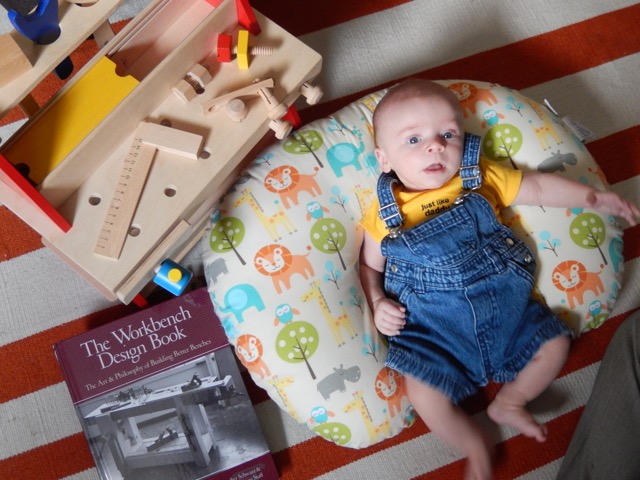 Last week I wrote about our baby boy’s first workbench, which is more of an amusement park than a real bench. Today I am going to show you his next bench.
Last week I wrote about our baby boy’s first workbench, which is more of an amusement park than a real bench. Today I am going to show you his next bench.
Soon after baby Asher got his Fisher Price bench, coincidence brought about his first semi-true workbench – a wooden one we found on the street in Brooklyn, N.Y. It was part of a group of items left available for the taking by a nice family who was moving out.
This bench has almost all the features of a proper bench, specifically a surface to work on and a vise. The vise is equipped with a wooden screw and two guide dowels to align and support the moving jaw. Also included are pegs, bolts and nuts, wrenches, a hammer and, as I discovered later after identifying the new version on a fancy toy-store site, a screwdriver that was missing from our street find. All parts are either made of beech or birch plywood. The bench’s main parts come together with notch-to-notch construction, and since they are not intended to be glued together (for easy disassembly) the bench is wobbly. This is not a big deal now because infant Asher can’t even crawl, but once he begins recognizing his faculties and starts pounding on the bench’s surface, I will have to find a way to stabilize it.
The only noticeable damage I had to fix was to reconnect the vise’s screw back into the hub. The two most likely got separated by a delinquent toddler who evidently over-tightened the vice’s screw. Now, I could have just glued it back again but … who can promise me that Asher will not walk the same criminal path and either cause the hub to separate from the screw again or, worse: strip the wooden threads from the tapped hole in the bench or on the screw itself.
So, I had to come up with a better solution; enter the torque limiter. A torque limiter is a component in a dynamic devise that is intended to disengage or fail first in order to protect the mechanism from damage as a result of overload. Torque limiters should be part of all reputable engineering. Take a “C” clamp for example. Good quality “C” clamps will have a tension bar that will bend under excessive torque (if you over tension the screw) to protect the cast iron frame from damage. It is better to have a deformation in the tension bar (which you can straighten back on an anvil) than to have a catastrophic crack in the clamp’s body.
In the case of the Asher’s bench vise, I decided to place the torque limiter in the hub. The plan was to drill a hole through both the hub and the screw and insert a thin pin through them. The day that Asher over tightens the vise, the extra torque on the mechanism will cause the pin to shear which will protect the mechanism. When this happens, I will simply be able to replace the pin. My hope is that at some point Asher will learn what over tightening is, and save his dad the chore of replacing the torque limiter. Yes I know this might be too much to ask from a curious kid…. Oh well – at least I enjoyed devising something useful that I have never done before.
My candidates for the pin material were: 2mm pencil lead, which is hard and brittle, and when the limited torque is exceeded, will snap with a bang!
A wooden toothpick, a stick of spaghetti and Q-Tip shaft.
I evaluated the risks of each option vis-a-vis: what if baby tinkers with the mechanism and swallows the broken pin. I concluded that, for this reason, spaghetti should be candidate #1 followed by the paper Q-Tip shaft.
I began my experiment with the spaghetti, but even though I tried three different brands, (by now you may think I’ve gone insane) they all were too weak and snapped under light torque. After this, I moved on to the paper shaft of the Q-Tip. I gave it a try and oh boy this was an amazing success. The paper rod held up exactly to the forces I anticipate Asher will apply and, only with excess leverage on the handle, the pin sheared.
Before introducing the bench to him, I will probably cut the paper pins to the same length as the hub diameter and put masking tape around the holes, just in case. Now that the bench is fixed, I just to wait for my little guy to reach the right age to make good use of it.
And one more thing. As Chris Schwarz and Popular Woodworking are preparing the revised edition of Workbenches: from Design & Theory to Construction & Use, Asher wanted to suggest a new chapter: Tot Benches. He will be happy to model for this and wants to remind all that babies are fantastic generators of sales.
Here are some supplies and tools we find essential in our everyday work around the shop. We may receive a commission from sales referred by our links; however, we have carefully selected these products for their usefulness and quality.



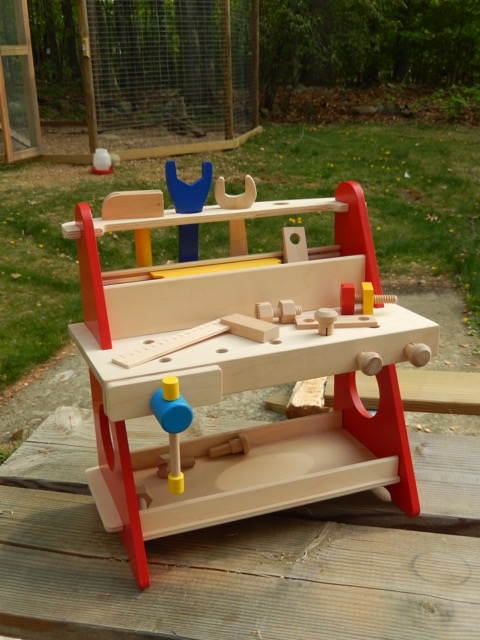
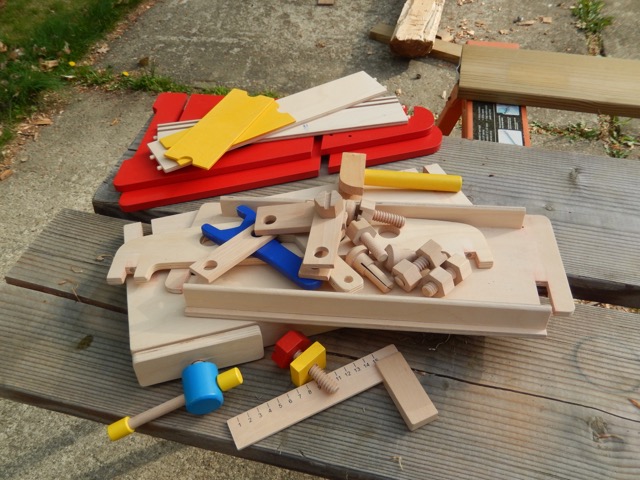
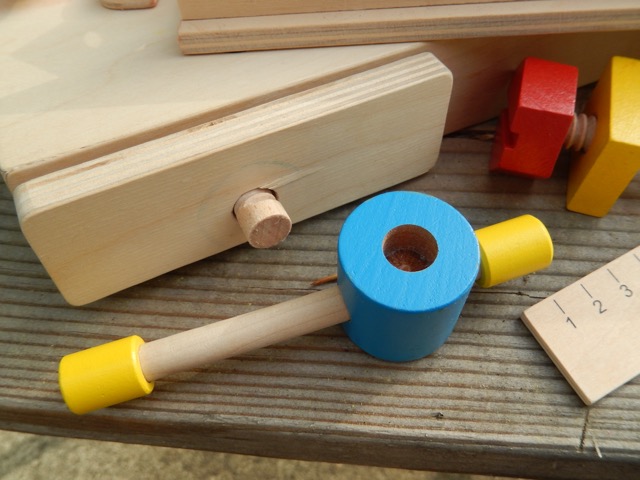
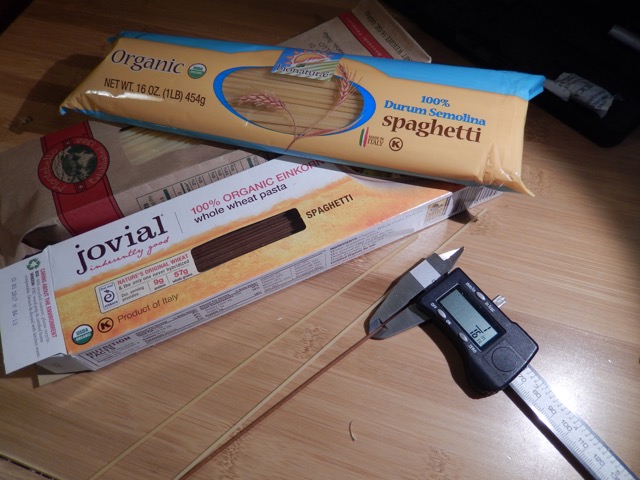
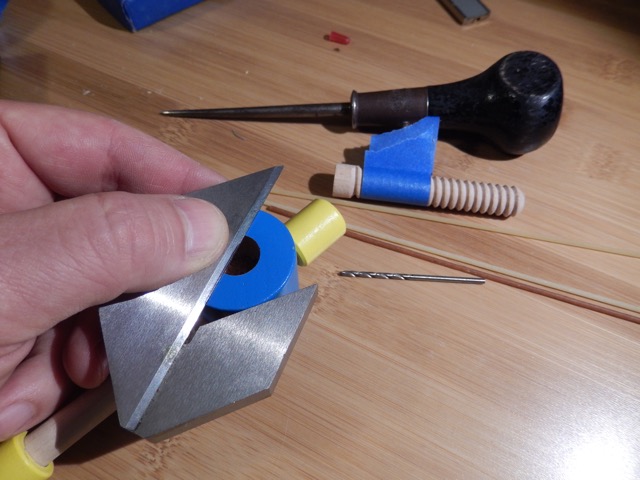
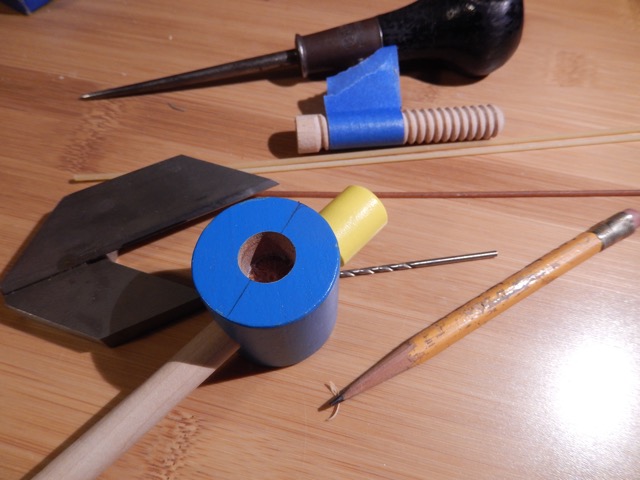
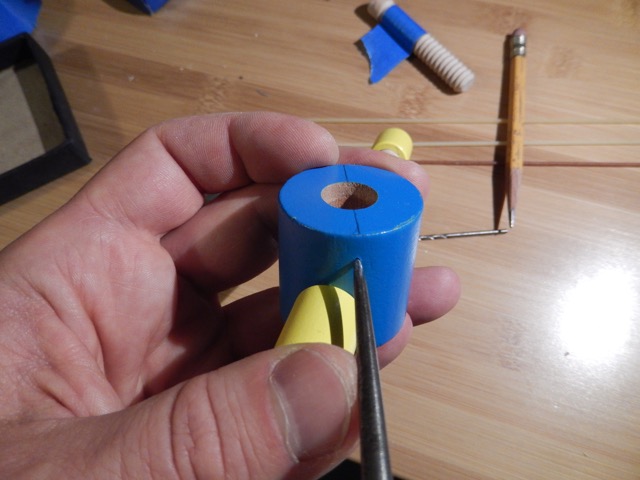
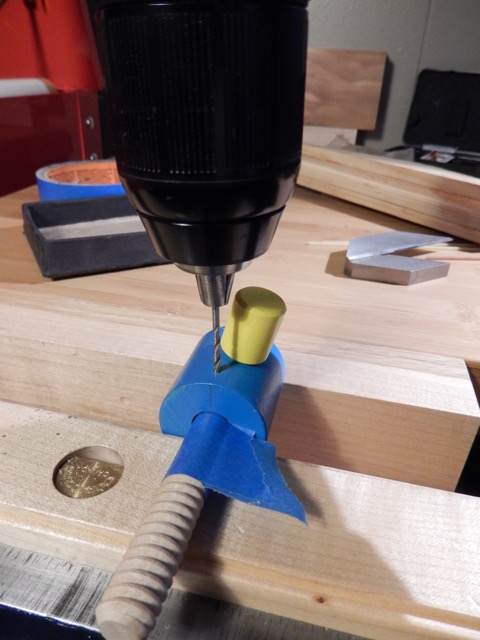
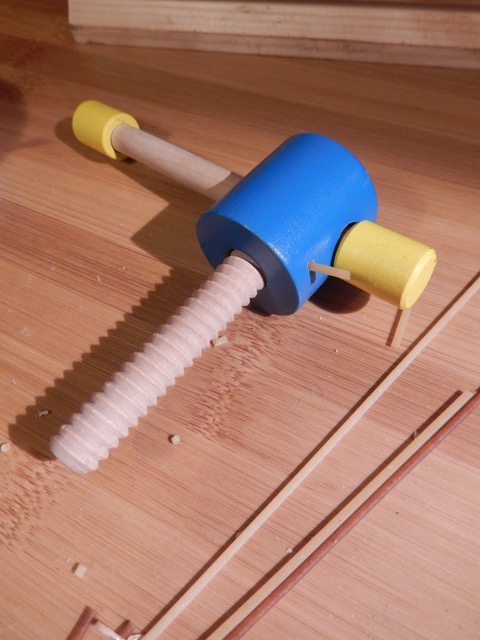
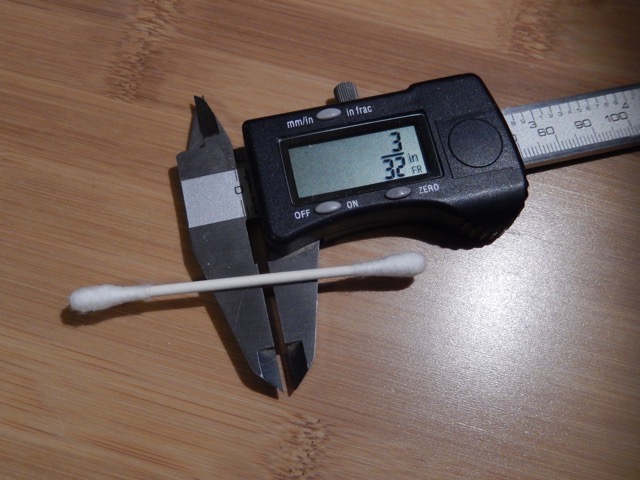
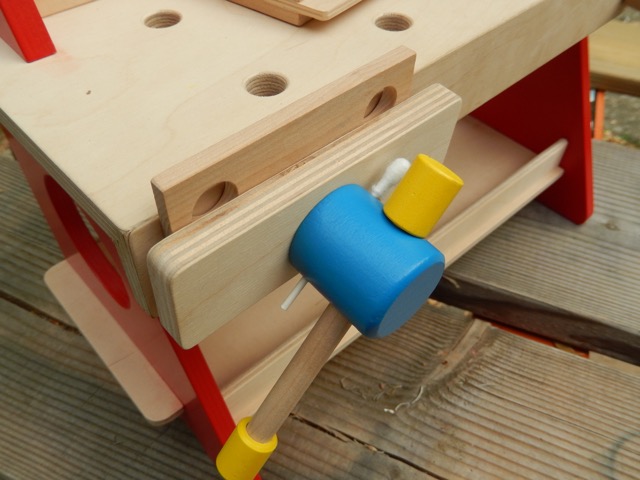
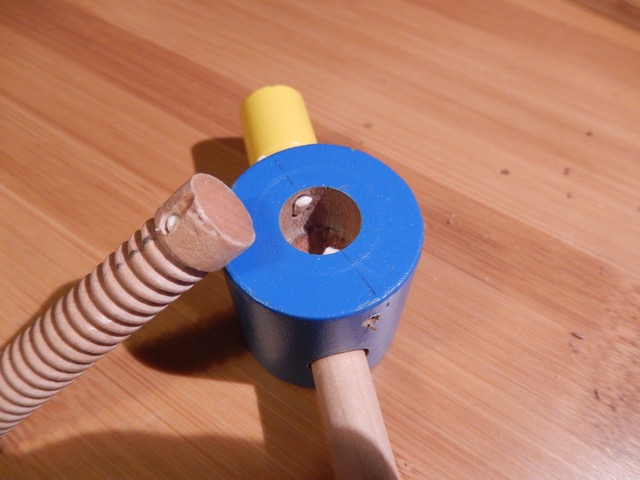
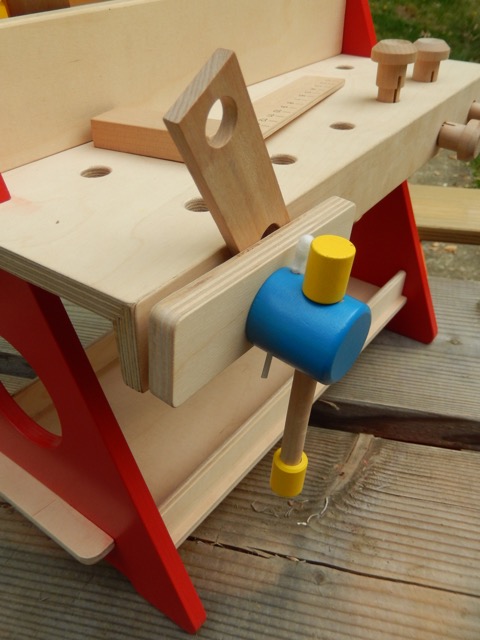
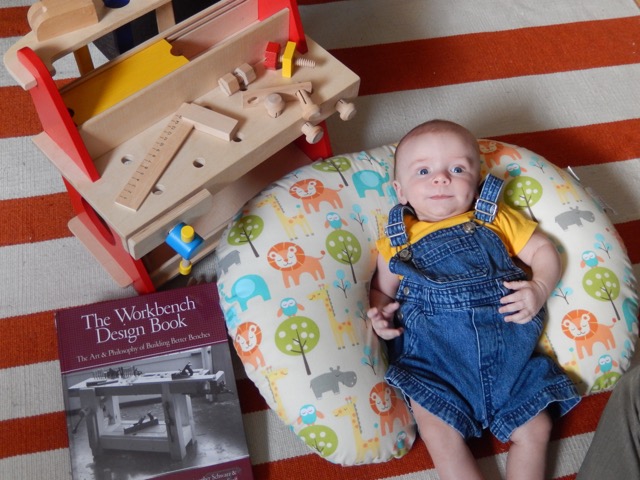






Yoav; After your previous post I was itching to lecture you about the evils of blown plastic rainbow colored toys, blah, blah, blah. My hidden agenda was the pedagogy I picked up as a parent of a Waldorf (aka Steiner) School child (now 36 years old) here in Chicago. I was figuring how to sneak in information about their handwork ethos, and how they actually teach chisel sharpening and use, (add more blah, blahs here). In the end I didn’t post it…..nobody likes a true believer lecturing, ESPECIALLY when it concerns their child.
I just got over laughing my head off, (at myself), when I took the time to read your thumbnail bio….and see that you teach woodworking at a Steiner School!
Great article! My 2 year-old is quickly outgrowing the Fisher-Price tool box and wanting some beefier. I never would have thought of a torque-limiter issue. Thanks for the insight and amusing-yet-useful article!
A clever approach to minimizing the damage by an overenthusiastic kid, but I think your dictionary should show that the process that takes place is not sheer, but shear.
What a great find, and great analysis and repair technique. Very entertaining article!